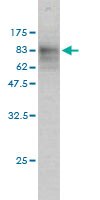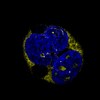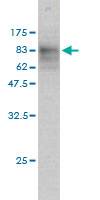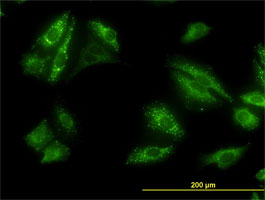DR1057 Sigma-AldrichAnti-SQSTM1 Mouse mAb (2C11)
This Anti-SQSTM1 Mouse mAb (2C11) is validated for use in ELISA, Immunoblotting, Immunocytochemistry for the detection of SQSTM1.
More>> This Anti-SQSTM1 Mouse mAb (2C11) is validated for use in ELISA, Immunoblotting, Immunocytochemistry for the detection of SQSTM1. Less<<Sinónimos: Anti-Sequestosome 1
Productos recomendados
Descripción
| Replacement Information |
|---|
Tabla espec. clave
| Species Reactivity | Host | Antibody Type |
|---|---|---|
| H, M | M | Monoclonal Antibody |
Precios y disponibilidad
| Número de referencia | Disponiblidad | Embalaje | Cant./Env. | Precio | Cantidad | |
|---|---|---|---|---|---|---|
| DR1057-100UG |
|
100 μg |
|
— |
| Product Information | |
|---|---|
| Form | Liquid |
| Formulation | In PBS, pH 7.2. |
| Positive control | HeLa cells |
| Preservative | None |
| Quality Level | MQ100 |
| Physicochemical Information |
|---|
| Dimensions |
|---|
| Materials Information |
|---|
| Toxicological Information |
|---|
| Safety Information according to GHS |
|---|
| Safety Information |
|---|
| Product Usage Statements |
|---|
| Packaging Information |
|---|
| Transport Information |
|---|
| Supplemental Information |
|---|
| Specifications |
|---|
| Global Trade Item Number | |
|---|---|
| Número de referencia | GTIN |
| DR1057-100UG | 04055977226010 |
Documentation
Anti-SQSTM1 Mouse mAb (2C11) Ficha datos de seguridad (MSDS)
| Título |
|---|
Referencias bibliográficas
| Visión general referencias |
|---|
| Lee, H,K., et al. 2010. Immunity. 32, 227. Bjorkoy, G., et al. 2009. Methods Enzymol. 452, 181. Ferguson, C,J., Lenk, G,M., and Meisler, M,H., Hum. Mol. Genet. 18 4868. Gal, J., et al. 2009. J. Neurochem. 111 1062. Mardakheh, F,K., et al. 2009.J. Cell Biol. 187, 265. Jung, H,S., et al. 2008. Cell Metab. 8, 318. |

















